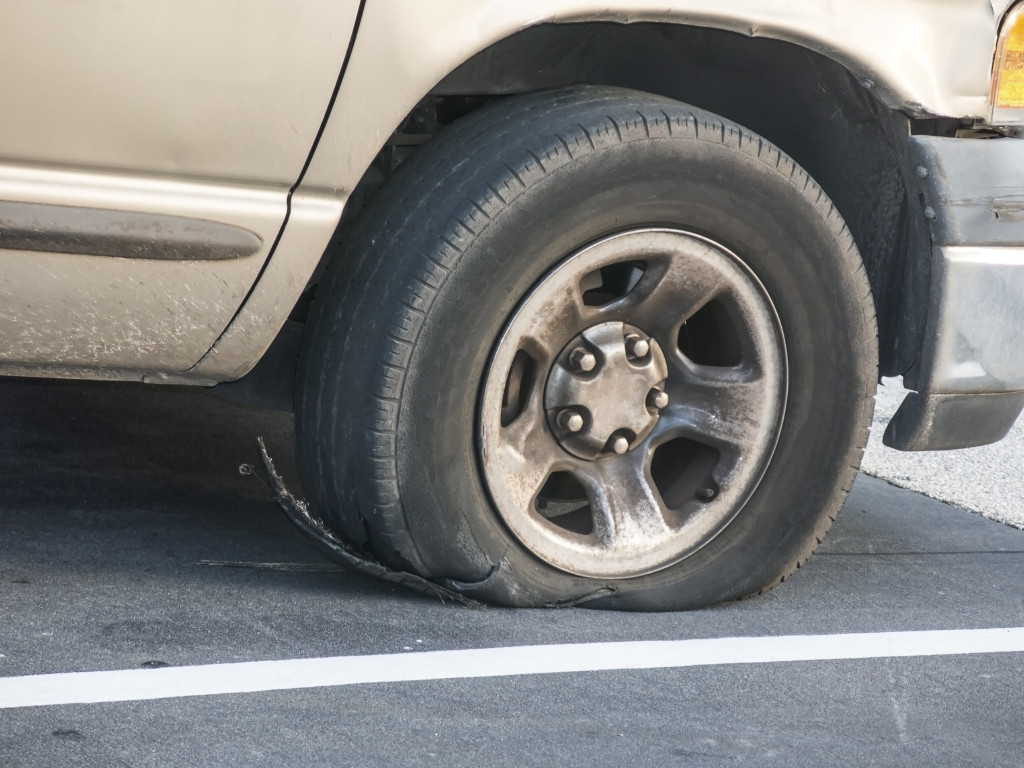First you’ll hear a loud BOOM, then a sudden jerk and pull to one side. At highway speeds a tire blowout can quickly cause an inexperienced driver to panic and lose control. According to the National Highway Traffic Safety Administration, tire blowouts cause over 75,000 accidents and kill over 400 drivers each year. Yikes! Before you let those numbers send shivers down your spine, know that a tire blowout doesn’t necessarily spell disaster, even if you aren’t a professional stunt driver.
By following a few simple tips, almost anyone can safely regain control after a blowout. Here's everything you need to know for surviving a tire blowout (plus how to avoid one in the first place).
Step 1: Stay calm. The absolute best thing you can do in the first few moments after your tire blows is absolutely nothing. Don’t turn the steering wheel. Don’t step on the brakes. Don’t take your foot off the gas pedal. Any of these actions could cause you to suddenly lose control of the vehicle and spin out. Take a deep breath and don’t panic.
Step 2: Steer straight. When your tire blows, you are going to feel the car pull to one side. Grip the wheel firmly with both hands at 10 and 2. You might feel the car wobble or fishtail, but it is vitally important that you resist the urge to turn the wheel sharply and overcorrect. Do your best to keep the vehicle going straight.
Step 3: Gently press the gas pedal. This may feel counterintuitive, but accelerating slightly after a tire blowout can help you regain control of the vehicle by maintaining your forward momentum. Once you’ve gained control, step off the gas pedal slowly.
Remember: the worst thing you can do when your tire blows is hit the brakes.
Step 4: Allow the car to slow itself. A blown tire is going to act like a parachute, naturally slowing your speed. At this point, either you or a passenger can turn on the emergency lights, as you’ll quickly decelerate to below cruising speeds.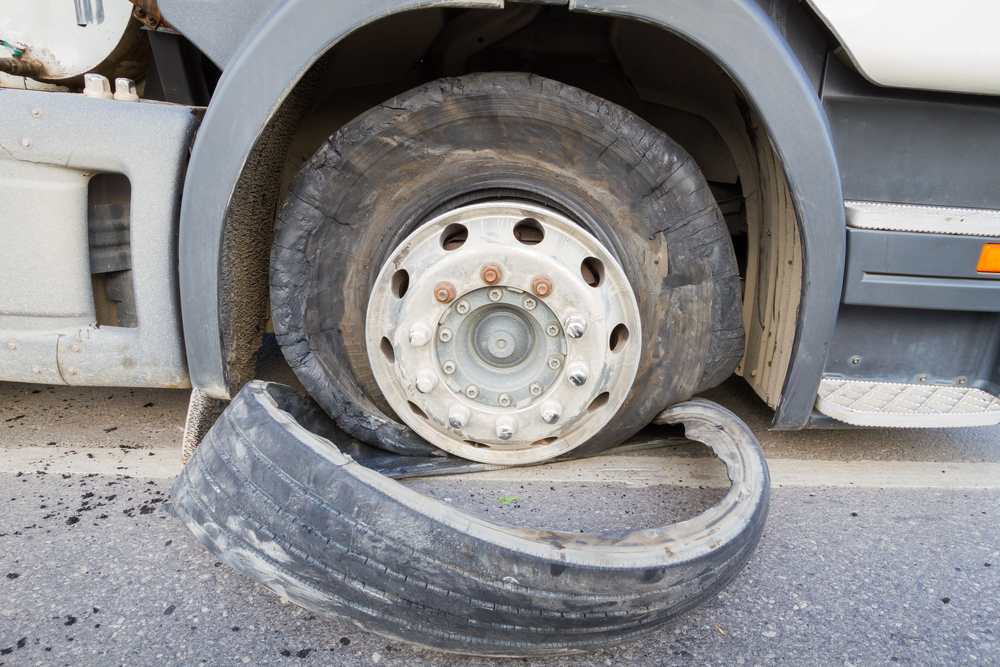 Do your best to point the vehicle straight and avoid turning your steering wheel.
Do your best to point the vehicle straight and avoid turning your steering wheel.
Step 5: Once your speed drops below 30 mph, gently step on the brakes. When you’ve slowed down to a safe speed, 20 mph or so, you can turn the steering wheel slowly to guide your vehicle off the road. When you are safely out of traffic, take a deep breath and call for help.
Double check tire pressure early and often. When it comes to blown tires, prevention is the best survival strategy. The vast majority of blowouts are caused by improper tire pressure. In the United States, cars sold after 2007 are required to be equipped with an electronic tire pressure monitoring system that alerts you when your air pressure fluctuates above or below safe levels. If you have an older car, you’ll have to do the monitoring yourself.
Check your tire pressure before any long trips (find out your vehicle's recommended tire pressure with this helpful online tire pressure tool).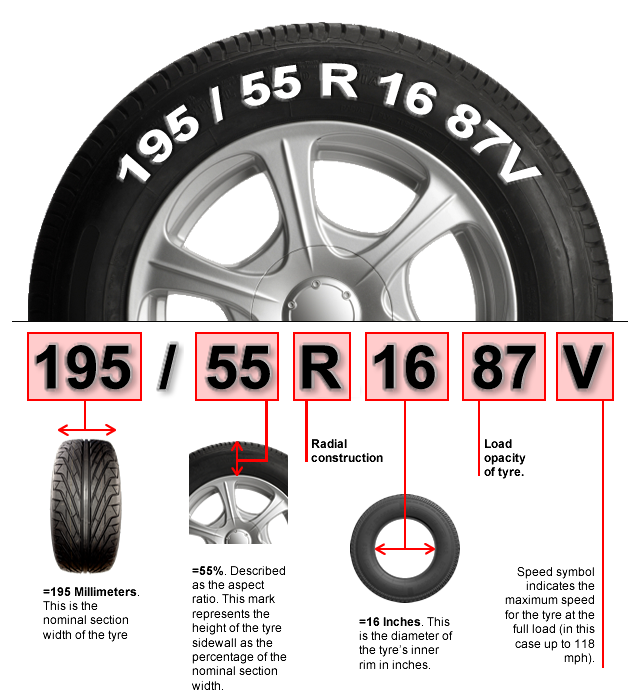 This is especially important in the summer, when the temperature of the pavement can rise to 140 degrees and cause your tire pressure to rise to bursting levels. If your tires feel “off” or you have a tire pressure warning light on, head to your local Firestone Complete Auto Care location to take advantage of a total tire checkup and repair service. Having your tires examined at the first sign of trouble is the best way to avoid a blowout altogether.
This is especially important in the summer, when the temperature of the pavement can rise to 140 degrees and cause your tire pressure to rise to bursting levels. If your tires feel “off” or you have a tire pressure warning light on, head to your local Firestone Complete Auto Care location to take advantage of a total tire checkup and repair service. Having your tires examined at the first sign of trouble is the best way to avoid a blowout altogether.
Don’t drive on old, worn tires. If the tread on your tires is worn down or if there are any cracks in the rubber, you could be doing some serious damage to your ride and your rims. Driving on worn tires in the heat of summer is asking for trouble, plain and simple. If checking your tires isn't something you think you'll do often, (because hey, we're all busy) you may want to choose a set of tires that does the work for you. Some tires, like DriveGuard tires, are uniquely engineered with a high tech cooling system that evenly distributes heat to help maintain safe tire pressure and prevent a blowout, even in extreme conditions.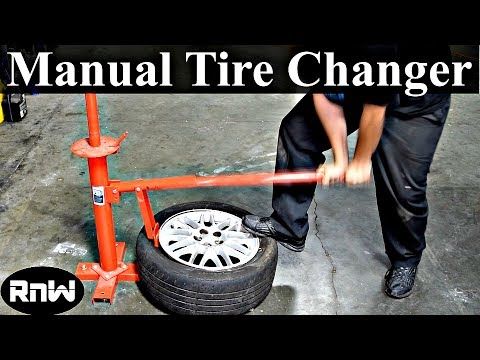
The bottom line? High quality tires and a little bit of due diligence can prevent most blowout situations. If you have any inkling that your tires may be "off," visit your local Firestone Complete Auto Care for a total tire checkup. Our tire shops are open late and on weekends, so when you need us--we're ready!
By Chris Hayes
Assistant Vice President, Transportation, Risk Control
Experiencing a tire blowout while you’re driving can be a scary and potentially dangerous situation. To be able to respond appropriately, you’ll need to know what to do, because when a tire blows out, it can take just a fraction of a second before your vehicle suddenly becomes a struggle to control. How you react can make all the difference in how the situation resolves itself.
The first step is staying calm and remembering some tips that can help you maintain control of your vehicle. You’ll want to know what a tire blowout sounds like and feels like, and how to drive through it.
If you experience a tire blowout, there typically are three key sounds you can hear. They can vary depending on your situation, but at first, you may hear a loud boom or bang of the tire popping; this sound typically reverberates throughout your car. Then, you may hear a whooshing sound or the sound of the air quickly discharging from the tire. Finally, you may hear a repeated flapping or flopping of the deflated tire hitting the road.
What Does a Tire Blowout Feel Like?If a front tire burst, you should feel the force mostly within the steering of your vehicle. With a rear tire, you should feel it more in the seat or body of the car. Whether the blowout occurred in the front or back, your response should be the same.
How to Drive Through a Tire BlowoutBe sure to stay calm. Focus on keeping your vehicle balanced and controllable – that’s the goal to help you stay safe. Here are some important tips and best practices from the National Highway Traffic Safety Administration (NHTSA)1 if you experience a tire blowout:
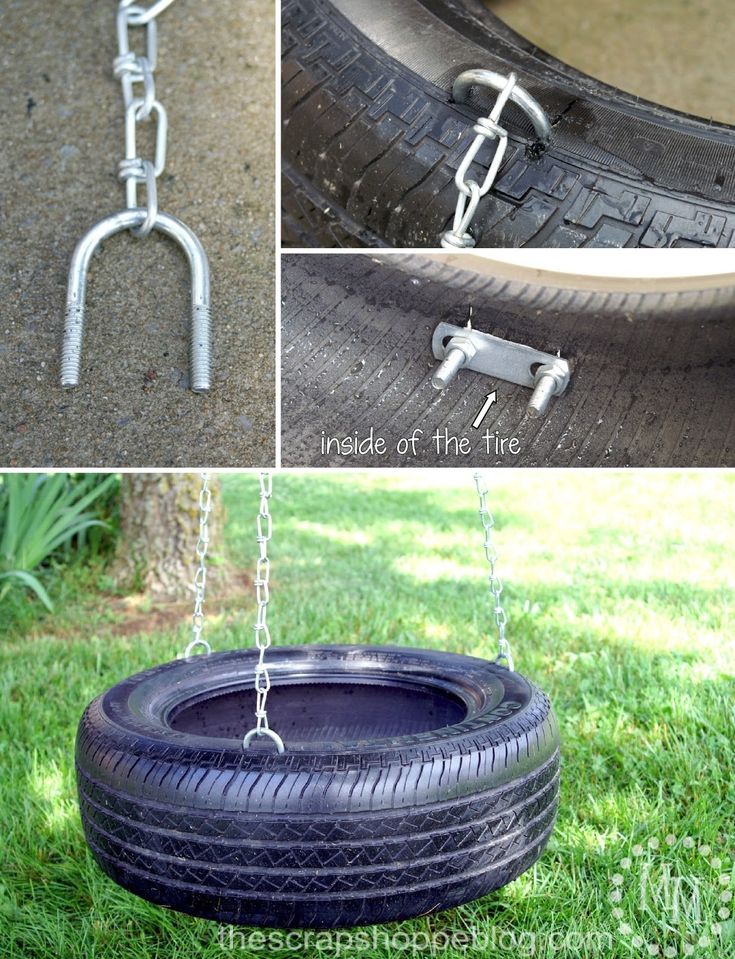
After a blowout, be sure that you are safely off the road and out of harm’s way before you exit your vehicle. Turn on your emergency flashers to alert other drivers, and if safe to do so, put out reflective cones or triangles if you have them. If it is not safe to change the tire where you are, or you are unsure how, call for roadside assistance.
Also keep in mind that a spare is only recommended for emergencies and should not be driven for long distances or at high speeds. Take the time now to read your owner’s manual to learn where your spare tire and necessary tools are located.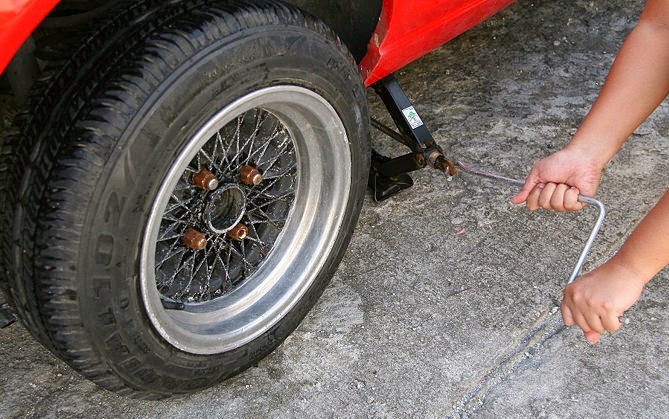 Your vehicle’s owner manual may also provide instructions on how to change a flat tire. It’s a good idea to be familiar with these procedures before you get stuck on the side of the road.
Your vehicle’s owner manual may also provide instructions on how to change a flat tire. It’s a good idea to be familiar with these procedures before you get stuck on the side of the road.
The good news is that many tire blowouts are preventable with some advance attention. Typically, most tire blowouts occur from May through October when the road surface is the hottest and from contributing factors, such as an underinflated tire, excessively worn treads, or an overloaded vehicle.2 It’s important to do a routine inspection of your tires to check for slow leaks, wear and tear and proper pressure. Keeping your carload light, within your vehicle manufacturer’s recommendations (found in the same spot as the recommended tire pressure), can help, too.3
Learn more about what to do if your car breaks down and other steps to help stay safe on the roads.
Talk to a local independent agent or get a car insurance quote online to create a policy that best addresses your needs. Learn more about car insurance from Travelers.
Learn more about car insurance from Travelers.
Sources
1 https://www.nhtsa.gov/equipment/tires
2,3 https://www.popularmechanics.com/cars/how-to/a9399/why-blowouts-happen-and-how-to-avoid-them-15832078/
Learn More About Car Insurance
Competitive and reckless driving put all drivers on the road at risk. Share the road with these safe driving tips.
The Insurance Information Institute recommends precautions when your car breaks down. Help stay safe with these safety measures.
No one likes to think about the prospect of being in a car accident, but if you think ahead and understand what steps to take, you may feel better prepared for the unexpected.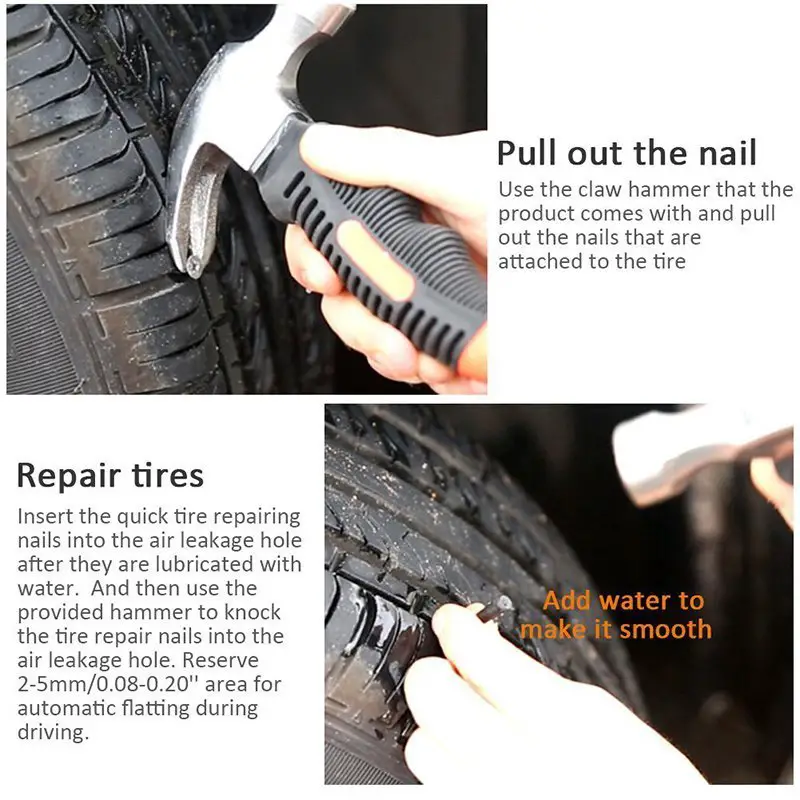
Fresh number
RG-Nedel
Rodina
thematic applications
Union
Fresh
02/09/2019 17:08
Boris Zakharov
Almost every driver has had to face the situation when he or she discovers that the tire of his car is flat. As a rule, this happens at the most inopportune moment - on the way to the country or in the morning before leaving for work. What should be done in all the above cases? The first step is to find out the cause of what happened. After all, it is no secret that not only cuts and punctures can lead to tire leaks, but, say, a rim bent the day before in a pit, or, as an option, a faulty nipple valve.
If it's a puncture
Be that as it may, the cause of tire depressurization in 90% of cases is a puncture in the tread area. To find the puncture site, as a rule, it is enough to turn the steering wheel to the side and move the car half a meter forward. After all, if you did not see an object sticking out of the tire (most often, nails, screws) immediately, most likely, he hid in the contact patch. Still not found the culprit of the puncture? In this case, a water sprayer or even a simple water bottle will help - spray a suspicious tread fragment and you will understand from the bubbles where the "siphonite" comes from.
Still not found the culprit of the puncture? In this case, a water sprayer or even a simple water bottle will help - spray a suspicious tread fragment and you will understand from the bubbles where the "siphonite" comes from.
If you are convinced that the puncture diameter is small (no more than 5 mm), and the tire has deflated slightly, you can pump up the wheel and drive to the nearest tire fitting - this is the most correct algorithm of actions. However, if the problem is discovered on the highway or at night (and you, of course, need to urgently go), you can try to repair the wheel yourself. How to do it?
On the Internet you can find a lot of advice on how to quickly, cheaply and relatively qualitatively fix a tire puncture. I was simply amused by the harsh, budgetary and, frankly, dubious method - to screw a self-tapping screw into the puncture site (the author, apparently, carries with him a whole set of bolts and screws), the diameter of which is slightly larger than the hole formed in the tire. This method of repair will be considered extreme, which is called the most extreme case.
This method of repair will be considered extreme, which is called the most extreme case.
Rescue kit
It is much more reasonable, however, to carry a special repair kit with you, consisting of several bands, glue and special tools, namely a spiral awl-file and a tourniquet for installing raw rubber flats (tubings).
For those who have not encountered such emergency repairs on the road, here are a few life hacks. Before starting repairs, the wheel must be pumped up to at least 0.5-1.0 bar. Before removing a screw from the tire or removing a nail, prepare an awl-file in advance. We insert it into the hole and make five or six movements up and down, trying not to damage the cord threads. We leave the awl-file in the hole, and moisten it ourselves in glue and insert the flagellum into the tire using a special harness holder. With an effort we push the tourniquet inside the tread, leaving the "tails" outside, sharply pull out the harness holder and cut off the excess rubber tails.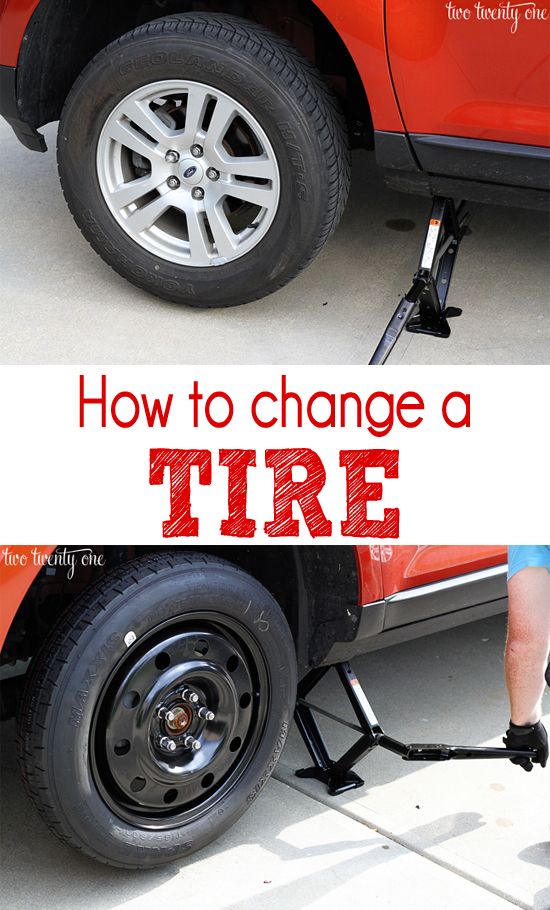
Another effective and easy way to repair a tire on the go is to use a special sealant that is poured from a cylinder into the inner volume of the tire directly through the valve. After injecting such a repair composition, tighten the spool and turn the wheel a few turns so that the mixture spreads evenly over the inner surface.
Under the action of centrifugal force, this compound spreads over the entire inner surface of the tire, filling the hole. The advantage of this solution is that such a saving spray can pump up the wheel, since the glue is injected into the tire under pressure. In other words, both a repair kit based on flagella and "anti-puncture" cylinders will always be useful to have "on board", especially if you go on a long trip.
If the sidewall of the tire is punctured
It happens that two wheels fail at once, and the issue cannot be solved by installing a "spare tire" alone. To an even greater extent, the situation will become more complicated if the tire receives a side "wound" - a cut, puncture or tear in the sidewall area.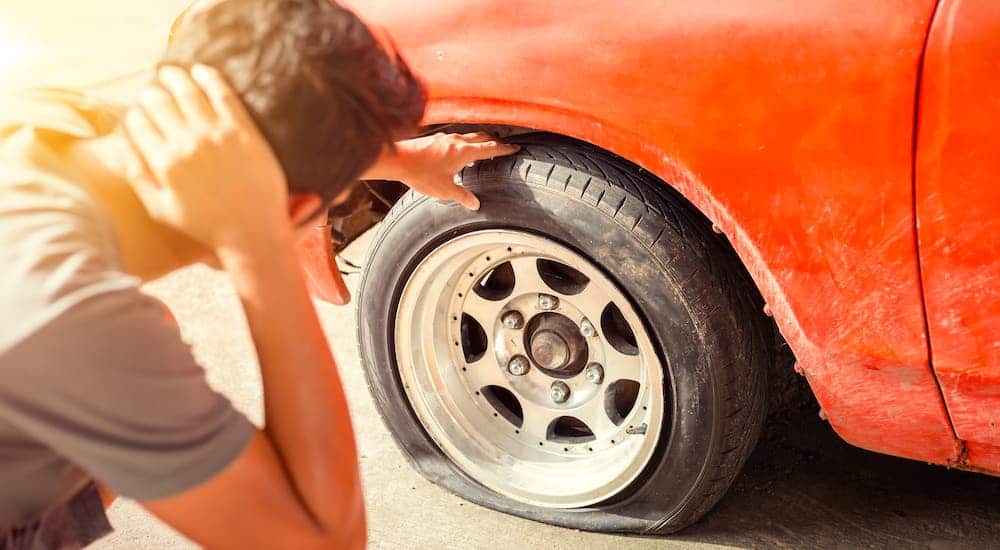
Small punctures in the sidewall of a tire can also be dealt with with rescue flagella, but you should be aware that sealing reliability in this case will be much lower than when repairing a tread puncture. Nevertheless, the algorithm of actions will be approximately the same as in the case of tread repair. We hammer one or several glued harnesses into the side cut, cut off the excess, pump up the tire and move at low speed towards the tire fitting.
If side punctures or cuts occur on the road, cord patches and a so-called activator glue can also be useful. Repair plasters (patches) consist of several layers of cord and elastic rubber. The secret is to use a special adhesive that can dissolve the top layer of rubber and soak into its structure.
The algorithm of your actions is the following. The area around the damage must be carefully sanded and, if possible, degreased, then applied to a layer of special glue and held for several minutes. Then the protective film is removed from the working side of the repair patch and the "patch" is pressed to the place of damage. At this stage, it is important to create the maximum possible effort for at least two to three minutes.
At this stage, it is important to create the maximum possible effort for at least two to three minutes.
What to do if the wheel is flat on the rim
It happens that you could not find a puncture in a tire, and your suspicion falls logically on the rim. First, check the nipple with soapy water to eliminate the possibility of a leak. After that, we carefully examine the metal of the disk and, with a high degree of probability, we find a loose fit of the tire to the base of the disk. As a rule, this happens as a result of deformation on the pits, less often - due to the appearance of natural corrosion on the rim.
How to solve the problem? Popular experience says the following. We bleed the air from the wheel and lubricate the defect of the disk with highly crushed soap or candle paraffin, which, as you understand, it is logical to prudently carry with you. Then we pump up the wheel and start moving. When driving from friction, the wax will begin to melt and "seal" the places through which the air was bled.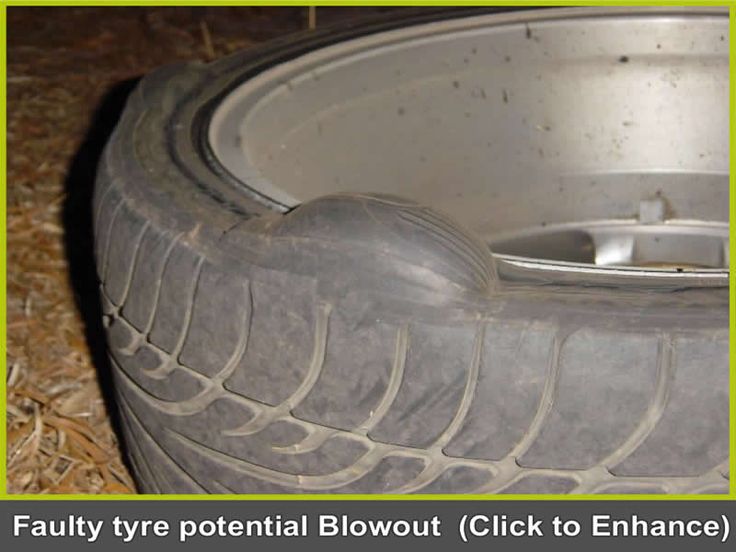 Even better, special lubricants, sprays and sealants, which can be purchased at automotive stores, will cope with the filling work.
Even better, special lubricants, sprays and sealants, which can be purchased at automotive stores, will cope with the filling work.
As you can see, it all comes down to carrying around a real gentleman's repair kit. In addition to a good pump and jack, we advise you to keep pliers, scissors, a knife, sealant, rubber glue, a set of skins, harnesses and patches and, of course, tools for installing them in the trunk. Don't forget also a can of special puncture repair. If you are going to travel far and for a long time, then it will not be superfluous to put a second “reserve” or “dokatka” in the trunk as well.
Share
#cars
Car tires can be damaged at any time of the year, but most often this happens in the spring, when the wind from the side of the road blows rusty nails, self-tapping screws and other sharp garbage accumulated over the winter under a layer of snow.
As a result of a puncture, the pressure in the tire decreases, and then the driver sees a corresponding signal on the instruments of his car.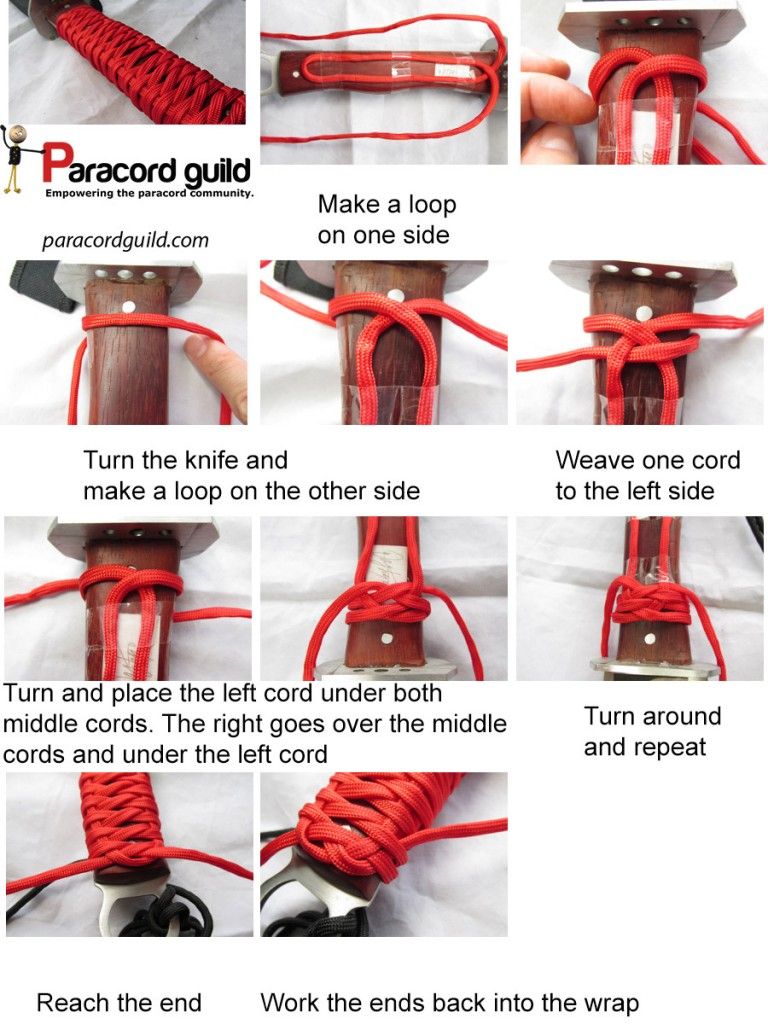
It often happens that you can’t get to the nearest service with such damage, so you have to repair the wheel on your own using improvised means. Let's tell you how it's done.
In case of any damage to a car tire, it is important to act in accordance with a clear algorithm of operations. It is equally important to choose the most suitable flat tire repair option. Experienced car owners usually know what to do, and newcomers in most cases are lost.
If you find that the car has a flat tire, park on the side of the road, turn on the emergency gang, assess visibility and put an emergency stop sign at a distance of 15 m from the car - in the city, 30 m - on a country road.
According to the rules of traffic rules, a punctured wheel can be considered the reason for stopping in a prohibited area, but you should not abuse it. Usually with this damage you can drive 20-30 meters and stop in a safer place. Don't forget to take into account the amount of space on the side of the machine that is needed to clear a wheel puncture.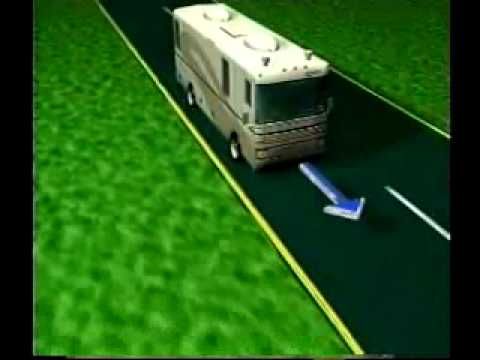 Following the voice of reason (and the Rules of the Road), wear reflective clothing at night or when visibility is poor.
Following the voice of reason (and the Rules of the Road), wear reflective clothing at night or when visibility is poor.
In order to cope with the problem of rubber puncture on your own, you need to purchase a repair kit at a car dealership and always have a repair kit with you. It contains thread-reinforced cords, glue, a round rasp with notches, an abrasive awl with a holder, or a needle for installing a tourniquet. Pay attention - too "toothy" awl can break the cord threads, and its task is to push them a little.
Separately, purchase a sealant, a sharp knife, a screwdriver and pliers. With such an arsenal, in most cases you will be able to repair the damage without disassembling and removing the wheel.
If a nail gets into the wheel, then the puncture site is not always visible to the naked eye. To find it, you need to listen - the air leaves the tire with a low hiss. You can also apply a soapy solution to the wheel and find a place where bubbles will inflate.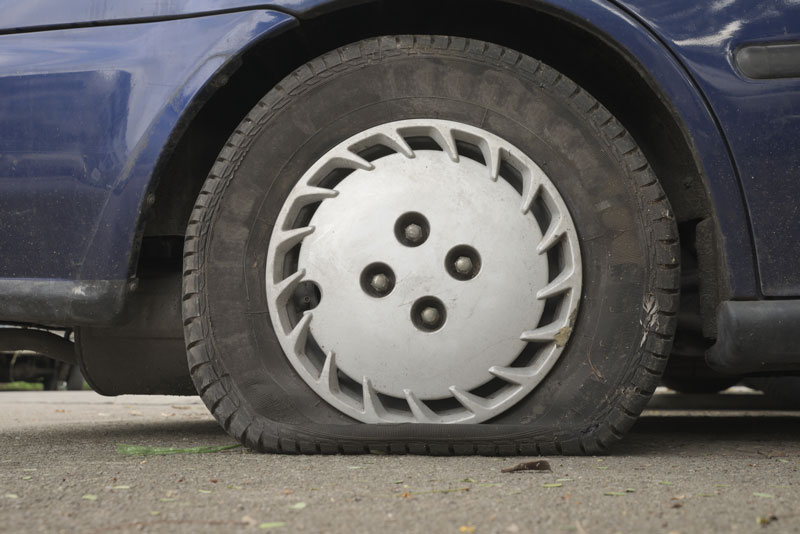 Instead of a soapy solution, you can water the protector with plain water and watch for the appearance of bubbles.
Instead of a soapy solution, you can water the protector with plain water and watch for the appearance of bubbles.
Tire repair with a patch consists of the following steps:
The best patches are produced by Maruni, Rossvik and Tip-Top. They use special thick rubber.
They use special thick rubber.
Instead of a patch, you can put a flagellum made of raw rubber, which will serve as a miniature patch. It is included in the repair kit. Here's how it's done:
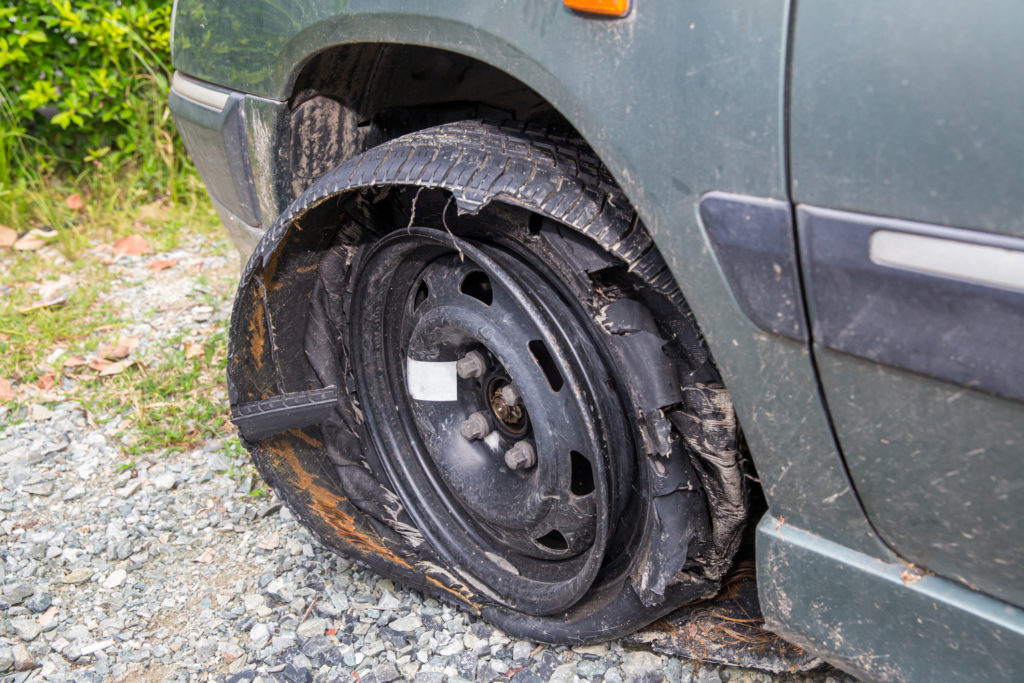
The advantages of such a repair are simplicity, low cost and decent reliability. It allows the tire to be used at least until the end of the season. But there are also disadvantages. For example, when installing a harness, you can damage the cord. Therefore, if possible, it is better not to enlarge the hole, but, having pumped up the tire, drive to the nearest car service.
You can repair a punctured tire with a liquid aerosol sealant, which is sold in cans. We take out the object that has fallen out of the tire, pour the sealant through the valve and scroll the wheel so that the product is distributed inside the rubber. After that, we pump up the wheel and drive 4-5 kilometers at low speed. So the sealant is finally evenly distributed inside the tire.
This method is easier than repairing a puncture with a patch or flagellum, but the sealant will not cope with a hole that is too large. Another disadvantage is the possibility of wheel imbalance.
If you punctured a tire, found a puncture, and there were no foreign objects in it, and you don’t have a repair kit or a spare wheel, you can use the “folk” method. Find a self-tapping screw (if not, unscrew it from some part in the cabin) and screw it into the puncture up to the very head , as in a plastered or wooden wall. A tightly screwed self-tapping screw will be able to maintain pressure, and use a sealant to repair minor damage inside the rubber. Of course, this will not make the wheel completely sealed, but it will give time to get to the nearest service. And in the best scenario with such a repair, you can drive up to a month, periodically pumping up the wheel when the tire pressure drops below 1.5 atmospheres.
It is better to inflate a completely flat tire without a spool, since when air is injected, resistance to the pump occurs. And the absence of this part allows the air flow to increase, which, on the contrary, facilitates the operation of the compressor.